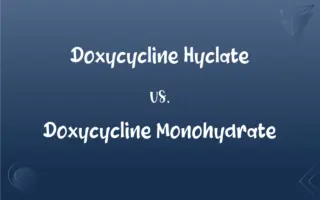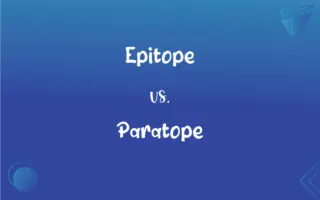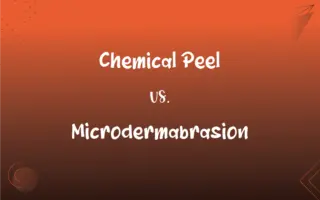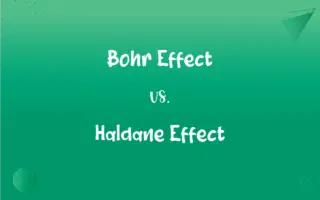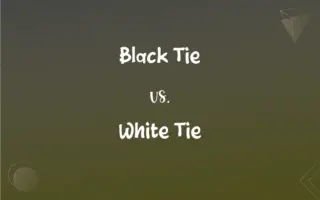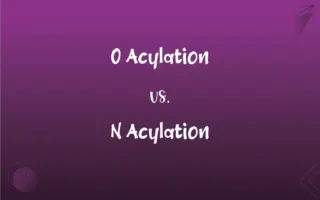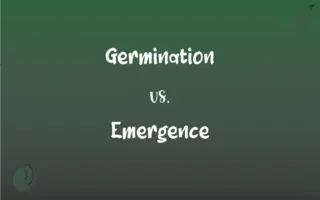Diploid vs. Haploid: What's the Difference?
Edited by Aimie Carlson || By Harlon Moss || Updated on October 29, 2023
Diploid cells contain two sets of chromosomes, while haploid cells have one set.
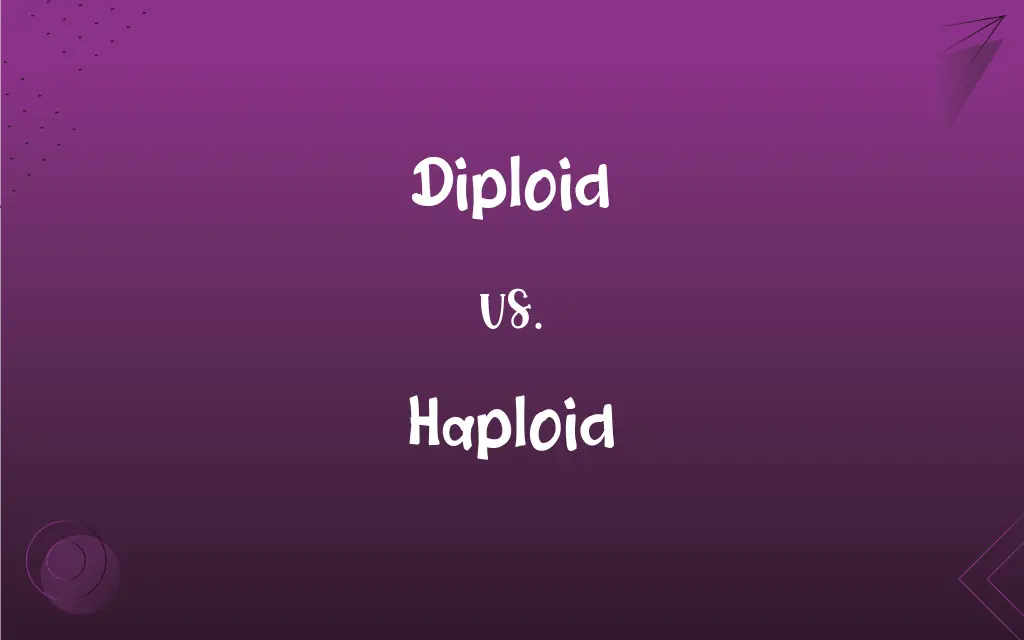
Key Differences
Diploid and haploid are terms used to describe the number of sets of chromosomes present in a cell. Diploid cells contain two complete sets of chromosomes, one set inherited from each parent. This means they have two copies of each chromosome, resulting in pairs. Haploid cells, in contrast, contain only one complete set of chromosomes. While diploid denotes a doubled chromosome number, characteristic of most body cells in many organisms, haploid represents a single set, often seen in reproductive cells like sperm and eggs.
In the context of human biology, diploid and haploid have significant implications for growth and reproduction. Human somatic cells (like skin, muscle, and liver cells) are diploid, containing 46 chromosomes (23 pairs). This diploid nature ensures genetic consistency throughout the body. Haploid cells, on the other hand, are the gametes: the egg and the sperm. Each haploid gamete has only 23 unpaired chromosomes, allowing for the restoration of the diploid state when an egg and sperm combine during fertilization.
The processes of meiosis and mitosis further highlight the distinction between diploid and haploid cells. Mitosis is a form of cell division producing two diploid daughter cells, each genetically identical to the original diploid cell. Haploid cells are formed through meiosis, a more complex form of cell division occurring in the gonads. During meiosis, a diploid cell undergoes two division events to produce four genetically distinct haploid cells, ensuring genetic diversity in offspring.
Diploid and haploid stages vary in prominence across different organisms. In humans and most animals, the diploid phase dominates, with the organism's primary body structure being diploid and only the gametes being haploid. However, in many plants and fungi, haploid stages can be as extensive as diploid ones. For example, in the lifecycle of certain plants, the haploid (gametophyte) phase produces structures that are just as intricate and significant as those produced during the diploid (sporophyte) phase.
In summary, the concepts of diploid and haploid are foundational in understanding genetics and reproductive biology. Diploid cells, with their two sets of chromosomes, form the main body structures in many organisms, ensuring genetic stability. Haploid cells, carrying a single chromosome set, play a pivotal role in sexual reproduction and genetic variability. Together, these states, diploid and haploid, orchestrate the balance between genetic conservation and diversity in the cycle of life.
ADVERTISEMENT
Comparison Chart
Chromosome Number
Two sets of chromosomes
One set of chromosomes
Cell Type
Body cells, somatic cells
Gametes (sperm, egg)
Chromosome Count
46 in humans
23 in humans
Cell Division Type
Mitotic division
Meiotic division
Genetic Locus
Can be homozygous or heterozygous
Single allele for each gene
ADVERTISEMENT
Diploid and Haploid Definitions
Diploid
Contains two sets of chromosomes.
Diploid cells like skin cells have two sets of chromosomes.
Haploid
Contains a single set of chromosomes.
Sperm cells are haploid with one set of chromosomes.
Diploid
Found in body cells.
Liver cells are diploid with two copies of each chromosome.
Haploid
Formed through meiosis.
During meiosis, haploid cells are produced for reproduction.
Diploid
Formed through mitosis.
After mitosis, daughter cells are diploid, just like the parent cell.
Haploid
Found in reproductive cells.
Egg cells in females are haploid, carrying half the genetic information.
Diploid
Double the genetic material.
Diploid cells have a double dose of genetic material.
Haploid
Half the genetic material.
Haploid cells have half the DNA content of diploid cells.
Diploid
Common in sexual reproduction.
In humans, all cells except gametes are diploid.
Haploid
Crucial for genetic diversity.
Haploid gametes contribute to genetic variation in offspring.
Diploid
Double or twofold.
Haploid
Having a single set of unpaired chromosomes, as in a germ cell (such as an egg or sperm) or in the somatic cells of a drone bee.
FAQs
How do diploid cells divide?
Diploid cells divide through mitosis.
What is a haploid cell?
A haploid cell contains a single set of chromosomes.
Are human cells mostly diploid or haploid?
Most human cells are diploid.
Can organisms be haploid?
Some organisms, like certain fungi and algae, can be haploid.
Can mutations affect ploidy?
Yes, mutations or errors during cell division can lead to changes in ploidy.
Are diploid cells genetically identical?
Diploid cells from the same organism are genetically identical, barring mutations.
What happens during fertilization regarding ploidy?
During fertilization, two haploid cells merge to form a diploid zygote.
What is a diploid cell?
A diploid cell has two complete sets of chromosomes.
How many chromosomes are in a human diploid cell?
A human diploid cell has 46 chromosomes.
Do haploid cells have DNA from both parents?
No, haploid cells carry DNA from only one parent.
Are all animal cells diploid?
Most animal cells are diploid, except for gametes.
What are examples of haploid cells?
Sperm and egg cells are examples of haploid cells.
How are haploid cells formed?
Haploid cells are formed through meiosis.
Do plants have diploid and haploid stages?
Yes, many plants have both diploid and haploid stages in their life cycle.
Can diploid cells become haploid?
Diploid cells can give rise to haploid cells through meiosis.
Is a zygote diploid or haploid?
A zygote is diploid.
What is the significance of haploid cells in reproduction?
Haploid cells are crucial for sexual reproduction and genetic diversity.
What is ploidy?
Ploidy refers to the number of sets of chromosomes in a cell.
Can ploidy change in an organism?
In some cases, like during reproduction, ploidy can change.
How many chromosomes are in a human haploid cell?
A human haploid cell has 23 chromosomes.
About Author
Written by
Harlon MossHarlon is a seasoned quality moderator and accomplished content writer for Difference Wiki. An alumnus of the prestigious University of California, he earned his degree in Computer Science. Leveraging his academic background, Harlon brings a meticulous and informed perspective to his work, ensuring content accuracy and excellence.
Edited by
Aimie CarlsonAimie Carlson, holding a master's degree in English literature, is a fervent English language enthusiast. She lends her writing talents to Difference Wiki, a prominent website that specializes in comparisons, offering readers insightful analyses that both captivate and inform.



















































